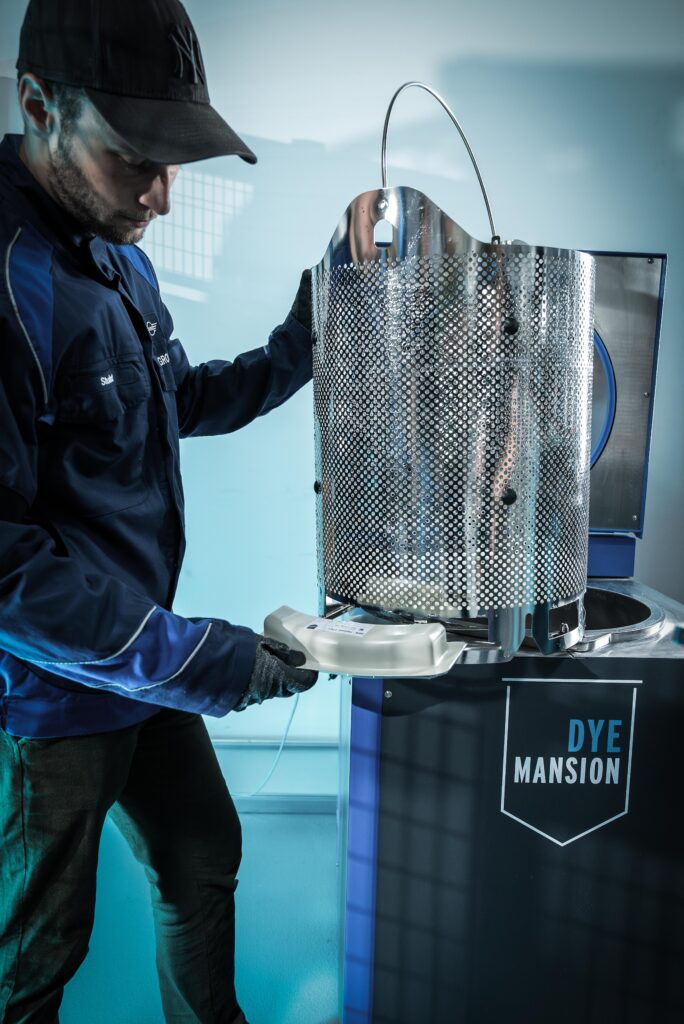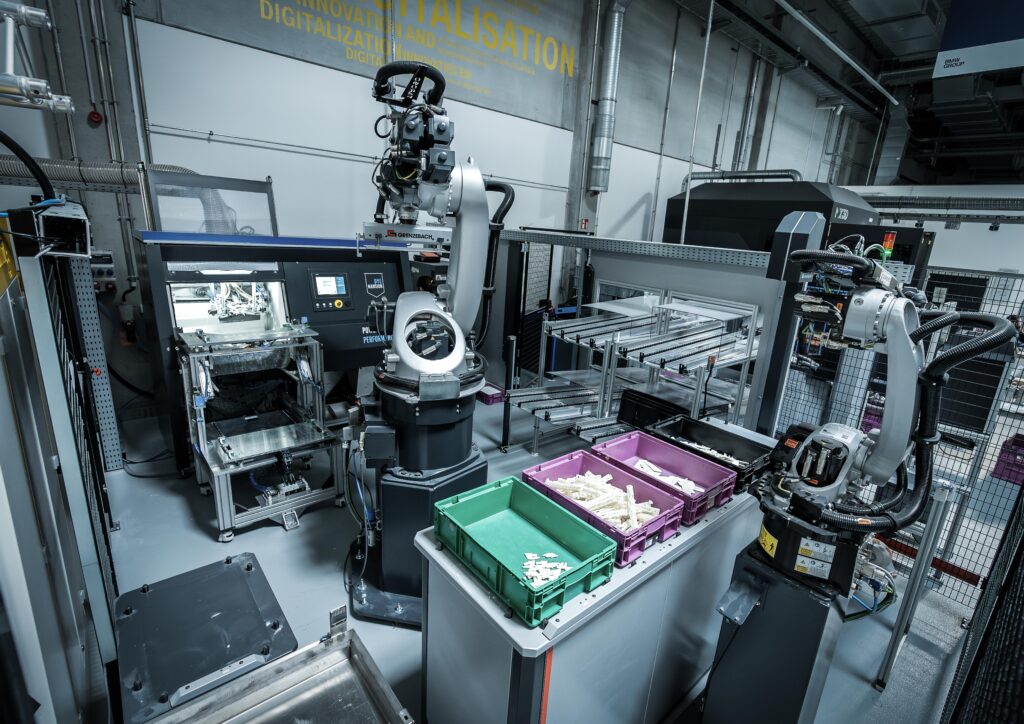After a three-year journey to efficiently scale polymer 3D printed part production, the POLYLINE project has concluded. This endeavor, headquartered at BMW’s Additive Manufacturing Campus, pooled the expertise of EOS, DyeMansion, BMW, and automation entity Grenzebach, alongside contributions from filtration specialist Krumm, software firm 3YOURMIND, chemical cleaning expert Olschner, infrared camera producer Optris, traceability and marking firm Additive Marking, supply chain services provider WAZP, service firm PROTIQ, Oechsler, and intriguingly, chainsaw company STIHL. Academic collaboration also enriched the project, with the universities of Paderborn, Duisburg-Essen, Augsburg, and Dortmund, as well as Fraunhofer IML and IGCV, lending their insights.
As we initially reported at its inception in 2020, 3DPrint.com Senior Writer & Editor Sarah Saunders highlighted the need for a thorough documentation of quality criteria and core characteristic values from CAD model to final print, alongside the automation of key sub-processes like selective laser sintering, cooling, and post-processing. The ambition was to seamlessly intertwine all technological facets of the laser powder bed fusion (LPBF) production chain. It seems that now the project has fulfilled these goals.
The consortium employed the EOS P500 printer, while Grenzebach’s Exchange P500/4 product efficiently handled empire build removals and cooling, enhancing printer optimization. The integration of automated guided vehicles (AGVs) for build conveyance, coupled with an automated sorting and picking system, streamlined the operational flow. A software layer was also employed to orchestrate these processes. DyeMansion’s apparatus played a key role in surfacing and dyeing, with its PowerShot DUAL Performance managing cleaning and resurfacing tasks.
“The successful POLYLINE project shows that an end- to- end automated factory is possible with 3D printing – and this is just the beginning,” said DyeMansion CTO Philipp Kramer.
“The POLYLINE automated process chain fits into the next generation printers and our standard production requirements, is a system- agnostic solution due to their standardized interfaces. Which is crucial for scaling- up Additive Manufacturing,” said Dr. Blanka Szost-Ouk, Head of Additive Manufacturing, Predevelopment & Planning at BMW Group.
“We have developed this at BMW for the automotive industry and we can now adopt and adjust it to other industries,” Fabian Krauß, Head of Polymer Systems at EOS, contributed.
“The main advantages of automation are to increase the productivity of the equipment, to reduce the downtime of the equipment, and to create a safe work environment for the employees,” Oliver Elbert, Head of Additive Manufacturing at Grenzebach, suggested.
Investing around $11 million, the German consortium has indeed made significant strides. The project stands as a testament to the power of integration, meticulous tracking, collaborative effort, and cohesive software tying. While laden with countless meetings, coffee breaks, and chart analyses, the endeavor showcased a doable workload that has now edged closer to actualizing a feasible polymer powder bed fusion line. This promising trajectory implies that subsequent iterations will be fine-tunable, opening doors for other entities to collaborate and concoct similar solutions. The potential dip in labor costs, paired with enhanced repeatability and reliability, presents a pivotal opportunity and challenge for our industry.
This is just one part of a BMW’s multifaceted approach to automate 3D printing, which sits alongside key projects, including one to automate metal 3D printing and another dedicated to sand core printing. The IDAM project, spearheaded by BMW Group, has successfully implemented two fully automated 3D printed automotive production lines for metal LPBF platforms, AI, and robotics to significantly enhance large-scale 3D printing in car production. With Loramendi and voxeljet, BMW has also automated the 3D printing of large-scale sand cores for casting cylinder heads in high-efficiency engines.
The hope for POLYLINE now rests on the consortium’s continuity, aiming to unveil fully automated lines to a broader market spectrum. Such key integration is believed to be the catalyst for cost-effective, extensive parts production, marking a significant leap towards making more items affordably manufacturable.
Subscribe to Our Email Newsletter
Stay up-to-date on all the latest news from the 3D printing industry and receive information and offers from third party vendors.
Print Services
Upload your 3D Models and get them printed quickly and efficiently.
You May Also Like
Nikon SLM Solutions Sells SLM 500 to Primary Weapon Systems to Expand Suppressor Production
Primary Weapons Systems (PWS) is a Boise, Idaho-based manufacturer of suppressors, firearms, and related components. A subsidiary of Vigilant Gear and a sister company to aftermarket Glock slide manufacturer Lone...
3DPOD 261: Tooling and Cooling for AM with Jason Murphy, NXC MFG
Jason Murphy´s NXC MFG (Next Chapter Manufacturing) is not a generalist service; instead, the company specializes in making tooling. Using LPBF and binder jet, the company produces some of the...
HP and Firestorm Labs Form Partnership to Use Multi Jet Fusion 3D Printers in Deployable Factories
HP Inc., maker of a range of additive manufacturing (AM) solutions including the Multi Jet Fusion (MJF) ecosystem, has announced a partnership with Firestorm Labs, a developer of containerized, deployable...
3D Printing News Briefs, July 2, 2025: Copper Alloys, Defense Manufacturing, & More
We’re starting off with metals in today’s 3D Printing News Briefs, as Farsoon has unveiled a large-scale AM solution for copper alloys, and Meltio used its wire-laser metal solution to...


































